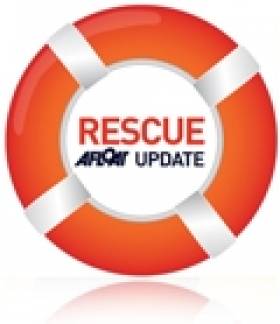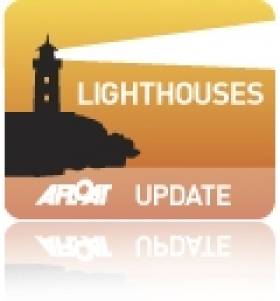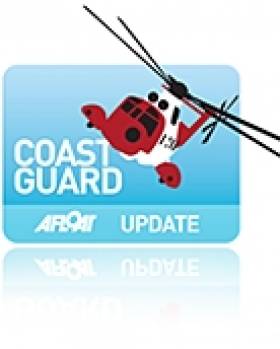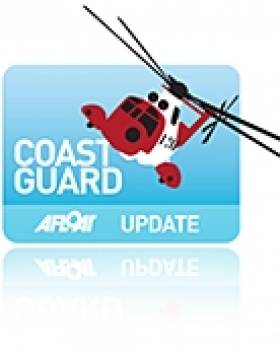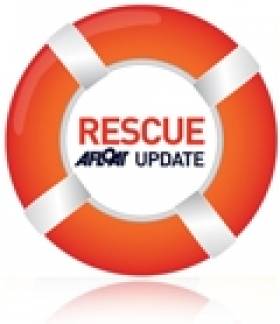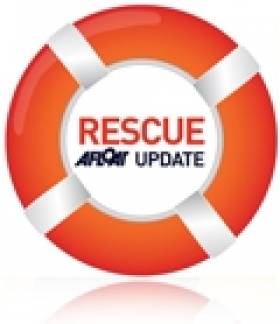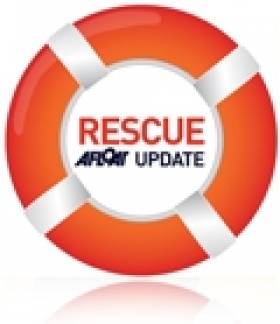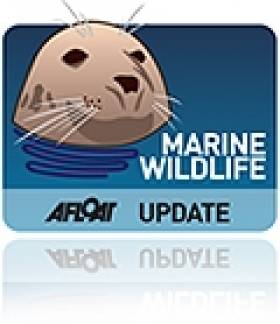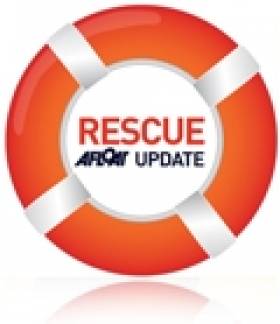Displaying items by tag: Rescue
Merchant Navy Association Boat Club Launches 'Eyes that can save Lives' Watchkeepers Scheme
#rescue – The Merchant Navy Association Boat Club launches its new "SeaVue" Watchkeepers Afloat Scheme "Eyes that can save Lives"
The SeaVue Watchkeeper Afloat Scheme is modelled on similar lines to the National Coastwatch Institution's "Eyes along the Coast" watchkeeping service operating from the NCI's fifty shore-based look-outs around the coast of England and Wales.
The "SeaVue" Scheme has its origins in the old Auxiliary Coastguard Afloat Scheme that operated in the days before HM Coastguard VHF marine radio communications were as sophisticated, extensive and reliable as they are today, and of course the scheme derives a huge benefit from the vast reservoir of skills, knowledge and experience at sea accumulated by our MNA members, all of whom have a professional maritime background either in the Merchant Navy, Royal Navy, RNLI, HM Coastguard, NCI, or the fishing fleet.
Essentially SeaVue is a scheme whereby members of the Merchant Navy Association Boat Club watchkeepers undertake to act as "watchkeepers afloat" whenever they go out in their boats and "Spot, Plot and Report" incidents, potential casualty situations or persons at risk to HM Coastguard or the relevant inland waterways authority.
Among those members who've registered to participate in the Seavue Service are several who operate on inland waterways and even a few who keep their boats abroad and will therefore report to the relevant SAR authorities in that locality.
More about the SeaVue Scheme, and photos of some of our members boats, can be found on the Members Area of the Merchant Navy Association Boat Club's dedicated new website www.seafarersafloat.com by clicking on the SeaVue button.
Worker Left Dangling From NI Lighthouse Rescued
#Lighthouses - TheJournal.ie reports on the rescue of a repairman left dangling 40 feet in the air from the side of a lighthouse in Northern Ireland after the scaffolding he was standing on collapsed.
The NI Ambulance Service tweeted this image of the worker's precarious situation at St John's Point Lighthouse near Donwpatrick yesterday (14 March).
Thankfully the man was rescued shortly after with no serious injuries sustained.
See the dizzying predicament for yourself:
Scene from this mornings rescue at St Johns point. Patient can be seen suspended from rope and scaffolding collapsed pic.twitter.com/L43hdERJtQ
— NIAS (@NI_Amb_Service) March 14, 2014Coastguard Airlifts Injured Fisherman From Norwegian Trawler
#Coastguard - TheJournal.ie reports that the Irish Coast Guard was involved in the rescue of an injured fisherman from a Norwegian trawler hundreds of miles off the west coast in the early hours Monday (24 February).
Coastguard helicopter Rescue 115 from Shannon - the first of the IRCG's new fleet of Sikorsky S92 long-range choppers - was dispatched on Sunday night to the fishing boat's position some 250km off Slea Head.
The helicopter quickly evacuated the fallen crewman to Mid-Western Regional Hospital for treatment for chest injuries.
Irish Coast Guard Fleet On Par With Europe's Best Says Chief
#Coastguard - The rescue of a lost dog from a cliff on Valentia Island is just one of the latest achievements of a coastguard - both volunteer and professional - that boasts a fleet "as good as you'll find anywhere in Europe".
The Irish Examiner reports the comment from Irish Coast Guard director Chris Reynolds at the launch of Dublin's new Sikorsky S92 search and rescue helicopter yesterday (13 January).
On the same say, coastguard volunteers in Co Kerry retrieved a lost beagle from a cliff crevice on Valentia Island's Fogher Cliffs.
UPI reports that the dog, named Shandon, has been lost for three days after wandering from its owner on a walk.
But he was finally located and brought to safety by volunteers from the Knightstown Coast Guard - acting in their own capacity as official searches cannot be conducted for animals.
Teen Rescued After Falling Into River Boyne
#Rescue - The Irish Independent reports that a 13-year-old boy has been rescued after falling into the River Boyne in Drogheda last night (28 December).
It's believed the boy had been playing close to the edge of the river opposite the Louth town's Garda station when he slipped into the water.
The casualty was kept afloat by a life ring thrown by a passer-by till he was rescued by the Irish Coast Guard.
The Irish Independent has more on the story HERE.
Driver Rescued On Achill Island As Car Goes Into Deep Water
#Rescue - The Irish Times reports on a "lucky escape" in Co Mayo yesterday (22 December) after a car plunged into deep water on Achill Island.
The driver of the vehicle was quickly rescued by the island's Irish Coast Guard unit after her car came of the road near Keel Lake in gale-force weather conditions, and was left teetering on an underwater ledge above a 25-metre drop.
Sadly a similar incident in Co Roscommon just hours before had a tragic end when the driver of a car that went into a lake could not be revived, though his passenger managed to escape the vehicle.
The Irish Times has much more on these stories HERE.
Climbers Rescued From Glendalough After Falling In Water
#Rescue - TheJournal.ie reports that two climbers were rescued after falling into the water at the Upper Lake of Glendalough in Co Wicklow yesterday (Monday 25 November).
The two men had managed to get themselves out of the water near Temple na Skellig by the time members of the Glen of Imaal Mountain Rescue team reached them.
Rescuers provided the two men with treatment for hypothermia before bringing them back to the team's base.
TheJournal.ie has more on the story HERE.
Arklow Lifeboat Volunteers Help Rescue Seals Trapped In Fishing Gear
#MarineWildlife - Arklow RNLI were involved in the rescue of two seals caught in fishing gear close to the lifeboat station.
Volunteer crew at the Wicklow-based station were made aware yesterday afternoon (21 November) that the seals were apparently trapped in the fishing nets.
Deteriorating weather conditions nixed the feasibility of launching the lifeboat Ger Tigchelaar to rescue the weary animals, so the decision was made to attempt a rescue from the rocky shoreline.
A local surfer who was in the area assisted three RNLI volunteers and members of the public with attaching a heaving line to the fishing gear, which was then hauled onto the treacherous rocks.
The seals were then carefully freed from the netting one at a time by the RNLI crew members Michael Fitzgerald, Liam O’Neill and Austin Gaffney, who said they were delighted that they were "successful in saving both the seals lives”.
Both seals had a short break on the lower rocks of the shoreline before making for open water.
RNLI volunteers kept the public back to ensure the seals had the best chance of surviving their ordeal.
Irish Water Safety's National Awards Honour 37 Rescuers
#watersafety – Thirty-seven rescuers from twenty-two dramatic near-death incidents will receive recognition at Irish Water Safety's National Awards Ceremony at City Hall on Tuesday 19th November 2014, from 3pm to 5pm. Thirty-six lives were saved from drowning through the brave actions of these rescuers.
Mr Fergus O'Dowd TD Minister of State at the Department of Communications, Energy & Natural Resources and Environment, Community & Local Government will present the "SEIKO Just in Time Rescue Award" to these rescuers in appreciation for saving so many lives.
"Tragically an average of 140 drownings occur in Ireland every year," commented Minister O'Dowd, "and although that's 140 too many, the figure would be even higher but for the dramatic efforts of these individuals who saved others from drowning and the ongoing work of volunteers teaching swimming and rescue skills. Last year, the 147 drownings in Ireland were higher than the annual average, reason enough to highlight the work of Irish Water Safety Volunteers and their partners in the public and private sector in educating more people on how best to enjoy our wonderful aquatic facilities more safely. Complacency around aquatic environments is simply not an option", he added."
"The tragic drownings during this summer's warm weather brought home the need for constant vigilance around water. During the hot spell, twelve people drowned in two weeks and in July alone, Lifeguards trained and assessed by Irish Water Safety, rescued 559 people from drowning."
"I appeal to all adults to make themselves more aware of the dangers in, on and around water", continued Minister O'Dowd. "It only takes seconds for tragedy to strike and this can so easily be avoided if people take responsibility for their own safety by learning about the hazards. I ask that people encourage friends and family to read Irish Water Safety's guidelines at www.iws.ie so that they don't become a drowning statistic."
"Drownings often happen quickly and silently with 80% of drownings occurring close to the victim's home. The range of aquatic activities is extremely varied yet what is tragically constant each year is the gender most at risk - males - tragically reflected in the fact that of the 147 drownings last year, 113 were male and 34 female. An alarming 47% of accidental drownings occurred in the 30-59 year age group clearly demonstrating that regardless of age, one is never too old to learn how to stay safe around water."
Long-Service Awards will also be presented, recognising 670 years of personal service of 29 Irish Water Safety volunteers from around the country for teaching swimming, rescue and water survival skills.
Children Rescued In Surprise Sligo Bay Swell
#Rescue - RTÉ News reports that a large group of children in a sailing course were rescued today (Monday 12 August) when their boats were caught in a surprise swell in Sligo Bay.
The 17-strong group of children ages 9 to 12 and their instructors from Sligo Yacht Club were divided between five small sailing dinghies when the sea suddenly turned rough, capsizing two of the boats.
But the instructors acted swiftly in calling for help, with the Sligo Bay RNLI lifeboat arriving on scene quickly to rescue those who had not already made it to shore.
RTÉ News has more on the story HERE.


























